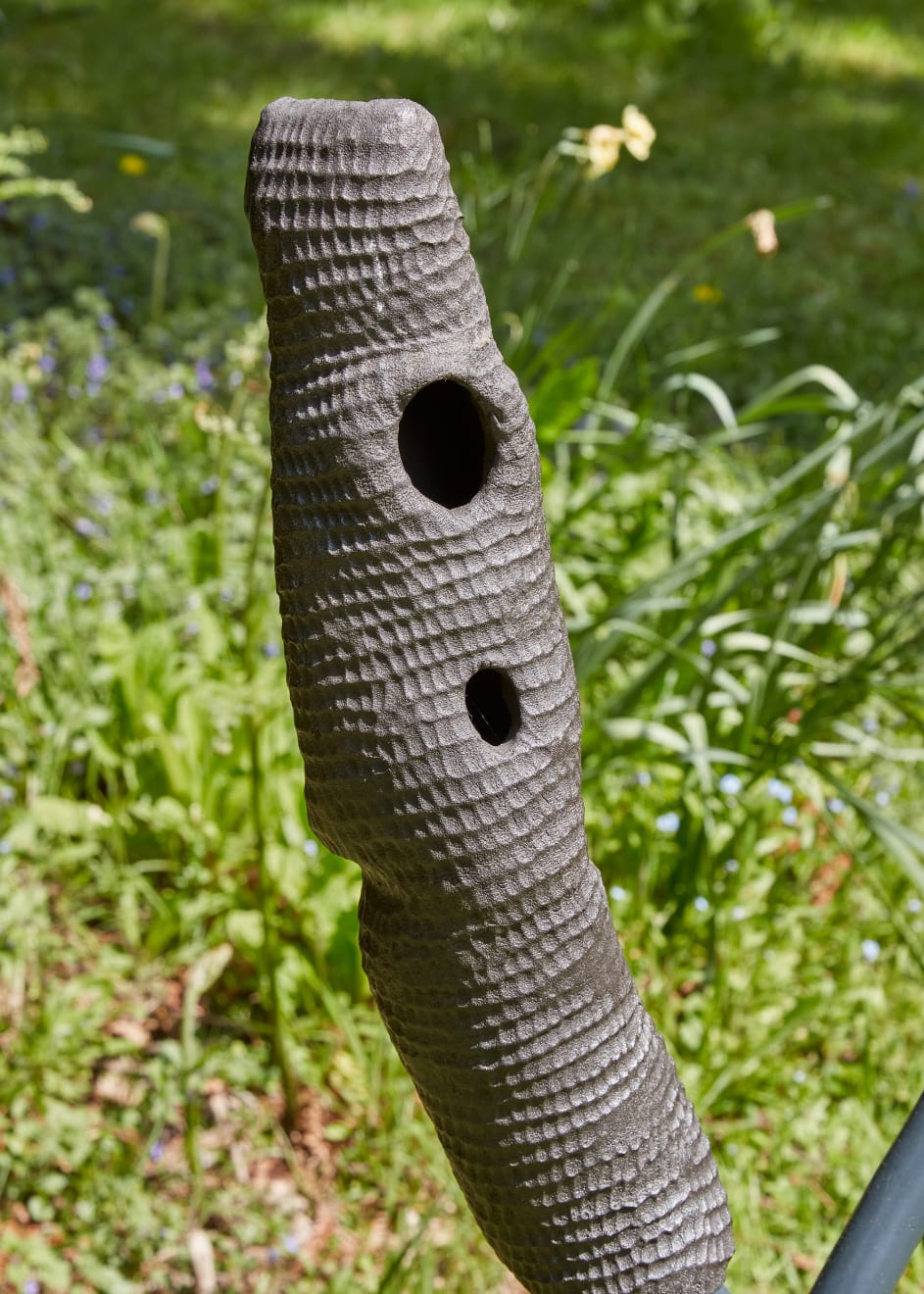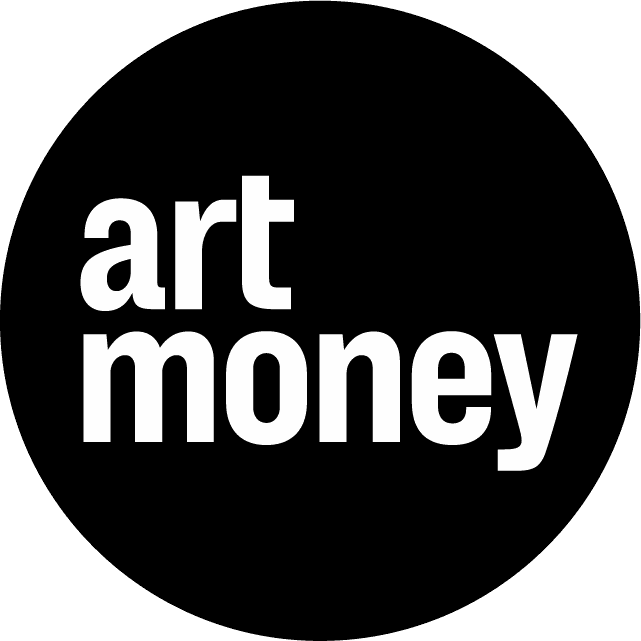Lucia Pizzani
47 1/4 x 23 5/8 x 31 1/2 in.
Further images
Black stoneware clay, impressed with masa corn (chosen for its significance within the artist’s own Venezuelan culture and its dispersal or migration across the world), is folded and shaped into three animated forms. A number of differing sized holes appear in each section, and there is a sense of choreography or celebration that beckons.
Pizzani’s practice is an expressive, mixed-media approach that includes photography, video, performance and sculpture. One of her core concerns is the interrelationship between narratives of women in history and processes of metamorphosis in the natural world. Clay plays a significant factor in expressing this, because of the historical relationship between clay and the body: the connection to ancient ways of making; to the very surfaces we walk upon and as a medium to explore meanings of creational myths in different cultures.
Lucia Pizzani (b. 1975, Caracas,) holds a BA in Communications Studies, (Universidad Católica Andres Bello, Caracas), Certificate in Conservation Biology from CERC at Columbia University (New York) and Master in Fine Arts from the Chelsea College of Art and Design (London). Recent Solo shows include: “Merunto: In the house of Spirits” at Bosse & Baum London, “Manto” for Madrid Gallery Weekend at Galería La Cometa, “Tiempo Membrana” at Hacienda La Trinidad” in Caracas and “Coraza” at Cecilia Brunson Projects London and Fundación Marso in Mexico City and recent collaborations and commissions include: LAVA a performance for Magasin3 Museum of Contemporary Art (Stockholm), Planet B Climate Change and the new sublime, curated by Nicolas Bourriaud where she was commissioned with new works for both Chapter 1 and Chapter 3 of this exhibition at Palazzo Bolanni in Venice, a new mural work invited by Sol Calero to exhibit in Cabilla a project at the TEA Museum in Tenerife, Casa Wabi and the Puerto Escondido Botanical Garden (Oaxaca, Mexico), LaunchPad Lab (Charente, France), and The Photographers Gallery (London). Her work has recently been incorporated to the TATE Collection and is also part of the Essex Collection for Art from Latin America ESCALA, Colección Patricia Phelps de Cisneros (CPPC), Catherine Petitgas Collection, Archivo Fotografía Urbana, Fundación Eugenio Mendoza, Colección Juan Yarur and Museum Of Latin American Art (MOLAA) among other private and public collections.
Each of the three moulded black stoneware forms is supported on its own short steel branch that connects to a tripartite support that stands on the ground.
Lucia Pizzani (b. 1975, Caracas,) holds a BA in Communications Studies, (Universidad Católica Andres Bello, Caracas), Certificate in Conservation Biology from CERC at Columbia University (New York) and Master in Fine Arts from the Chelsea College of Art and Design (London). Recent Solo shows include: “Merunto: In the house of Spirits” at Bosse & Baum London, “Manto” for Madrid Gallery Weekend at Galería La Cometa, “Tiempo Membrana” at Hacienda La Trinidad” in Caracas and “Coraza” at Cecilia Brunson Projects London and Fundación Marso in Mexico City and recent collaborations and commissions include: LAVA a performance for Magasin3 Museum of Contemporary Art (Stockholm), Planet B Climate Change and the new sublime, curated by Nicolas Bourriaud where she was commissioned with new works for both Chapter 1 and Chapter 3 of this exhibition at Palazzo Bolanni in Venice, a new mural work invited by Sol Calero to exhibit in Cabilla a project at the TEA Museum in Tenerife, Casa Wabi and the Puerto Escondido Botanical Garden (Oaxaca, Mexico), LaunchPad Lab (Charente, France), and The Photographers Gallery (London). Her work has recently been incorporated to the TATE Collection and is also part of the Essex Collection for Art from Latin America ESCALA, Colección Patricia Phelps de Cisneros (CPPC), Catherine Petitgas Collection, Archivo Fotografía Urbana, Fundación Eugenio Mendoza, Colección Juan Yarur and Museum Of Latin American Art (MOLAA) among other private and public collections.
Exhibitions
7th Edition (2023), Contemporary Sculpture Fulmer, Fulmer, UK (Guest Curator: Jenn Ellis)












